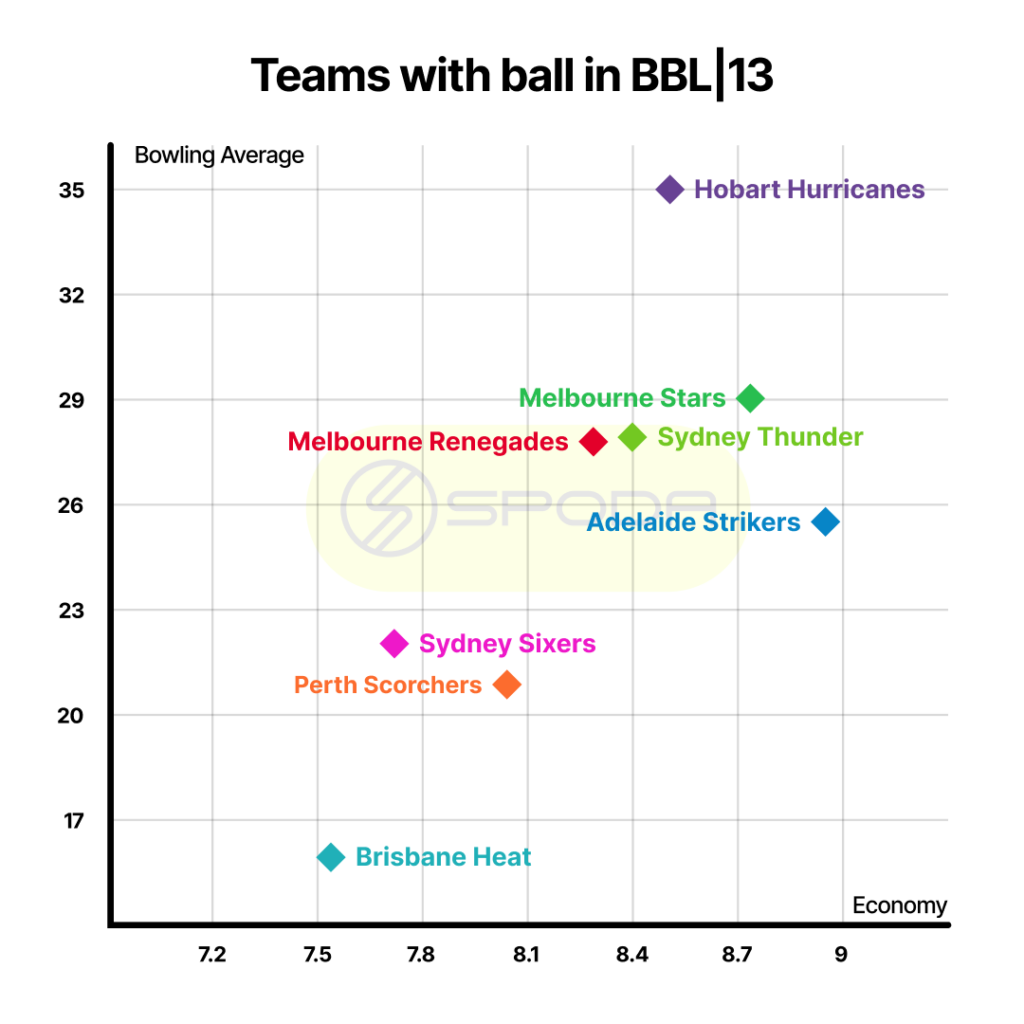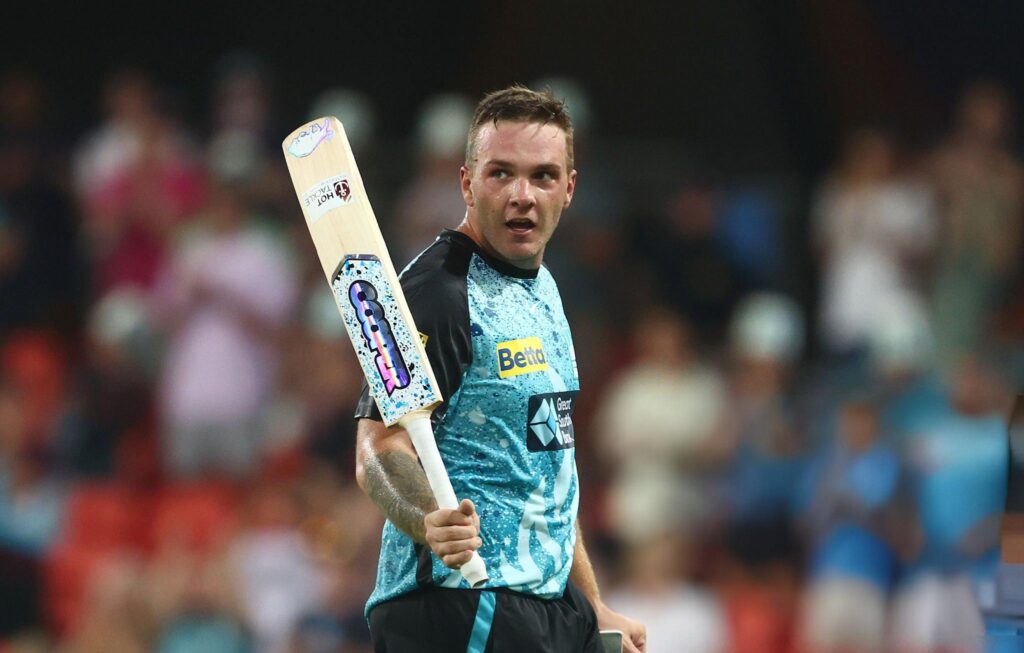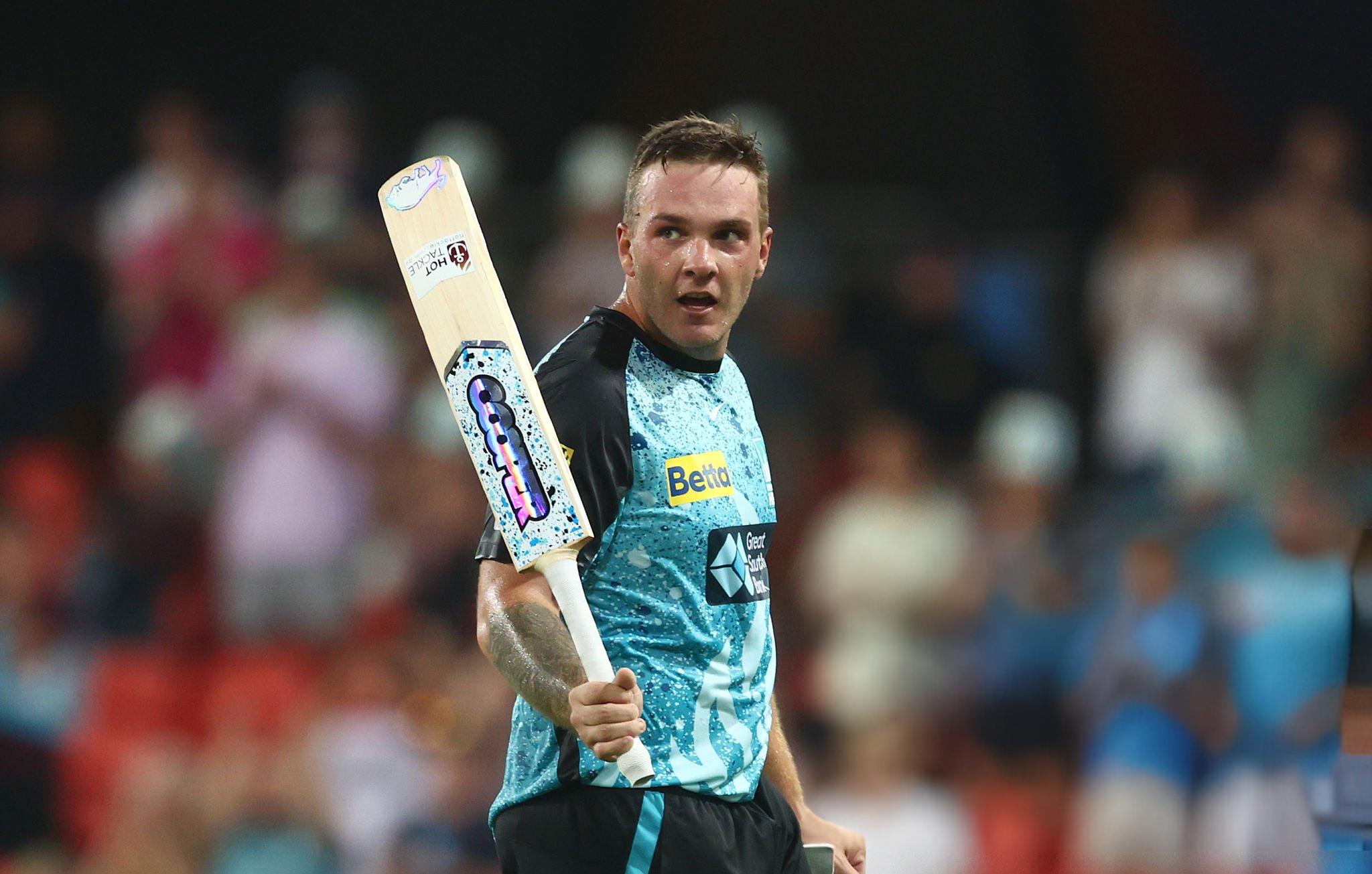The data collected for his preview about the Brisbane Heat came about using Spoda.ai, a conversational AI tool with cricketing intelligence to help you out with all your cricketing queries. So head on over right now, and test it out for yourself!
The Brisbane Heat were runaway leaders last season, topping the group stages, and they were lucky they did, as they stumbled against the Sydney Sixers before making it to the final where they finally managed to beat them.
Their success was driven by an ultimate bowling performance, where their spin bowlers and pace bowlers out performed every other team. The Brisbane Heat averaged 16.16 runs conceded for every wicket taken over the season and their economy was a handy 7.56, the Brisbane Heat were the only team that was able to score quicker than they conceded, ending with an average difference of 6.44 extra runs scored each game.
What went right for the Brisbane Heat?
Almost everything the Brisbane Heat did turned into gold, but their major plus point was an incredibly potent pace attack led by the likes of Michael Neser, Xavier Bartlett and Spencer Johnson. The Heat managed a tournament high of 97 wickets in the season, of which 73 came from their pace bowlers.
Their pacers averaged 15.22 as a collective unit with Paul Walter, Michael Neser, Spencer Johnson and Xavier Bartlett all taking more than 10 wickets. None of their pacers averaged over 20 while Bartlett, Johnson and Neser struck once every 12 balls, Walter struck once every 14.5 balls.

Their spin bowlers showed up as well, with Mitchell Swepson and Matthew Kuhnemann taking 10 wickets each, with both their economies being under 7 an over, making the spin choke well and truly on. As a collective unit, their spinners took a wicket once every 19 runs conceded and had an economy under 7!
Unlike every other team in the tournament, the Brisbane Heat managed to attack spin successfully through the course. Josh Brown was the lead wrecker scoring 140 runs against spin at an average of 46 and a strike rate of 184.21!

Colin Munro – 162.82, Marnus Labuschagne – 148.39 and Sam Billings – 131.58 made sure they didn’t let the spinners settle in and kept the scoreboard moving, in fact, the Brisbane Heat were the only team to perform better against spin than they did against pace.
What went wrong for the Brisbane Heat?
Almost everything went right for the Heat, but one department they could do better in is playing pace bowling. The Brisbane Heat lost a wicket for every 19.36 runs scored against the pacers while only striking at 127.77, compared to their average of 28.55 and strike rate of 137.72 against the spin bowler.

Nathan McSweeney had a tough time of it as he struck at 101.52 and averaged 22.52 against the pacers, similarly, Munro and Renshaw had their struggles too, striking at 119.75 and 125.64 respectively.
Aside from their batting performances against the quicks, not a lot went wrong for the Heat and they are set-up brilliantly once again going into
BBL|14!
What do the new drafts mean for the Brisbane Heat?
The Brisbane Heat managed to retain Colin Munro, who keeps their ability against spin bowlers up once more, with his performance in 2024 indicating he has been as good as ever in the Global T20 scene.
Tom Alsop was a pick that blindsided a few people but his ability to dominate pace is what makes the keeper-batter from Sussex an attractive package for the Brisbane Heat! Alsop strikes at 162.78 against pace bowlers, and has a balls per boundary ratio of 4.5, he solves their issue against pace bowlers while also mitigating the need of having Jimmy Peirson play in every game.
They also managed to bring back cult hero Paul Walter, who took 17 wickets at an average of 17.11 and at an economy of 8.55, and scored 90 runs at a strike rate of 125 as well.
Player to watch out for!
Max Bryant: Bryant heads into the BBL having scored 291 runs in 10 innings, at an average of 29.1 and striking at 146.23 in club cricket.
Will Prestwidge: Prestwidge heads into this tournament in fine T20 form in club cricket, playing played six games, scoring 156 runs at a strike rate of 197.47 and having bowled 16 overs at an economy of just 6.38.

Leave a Reply